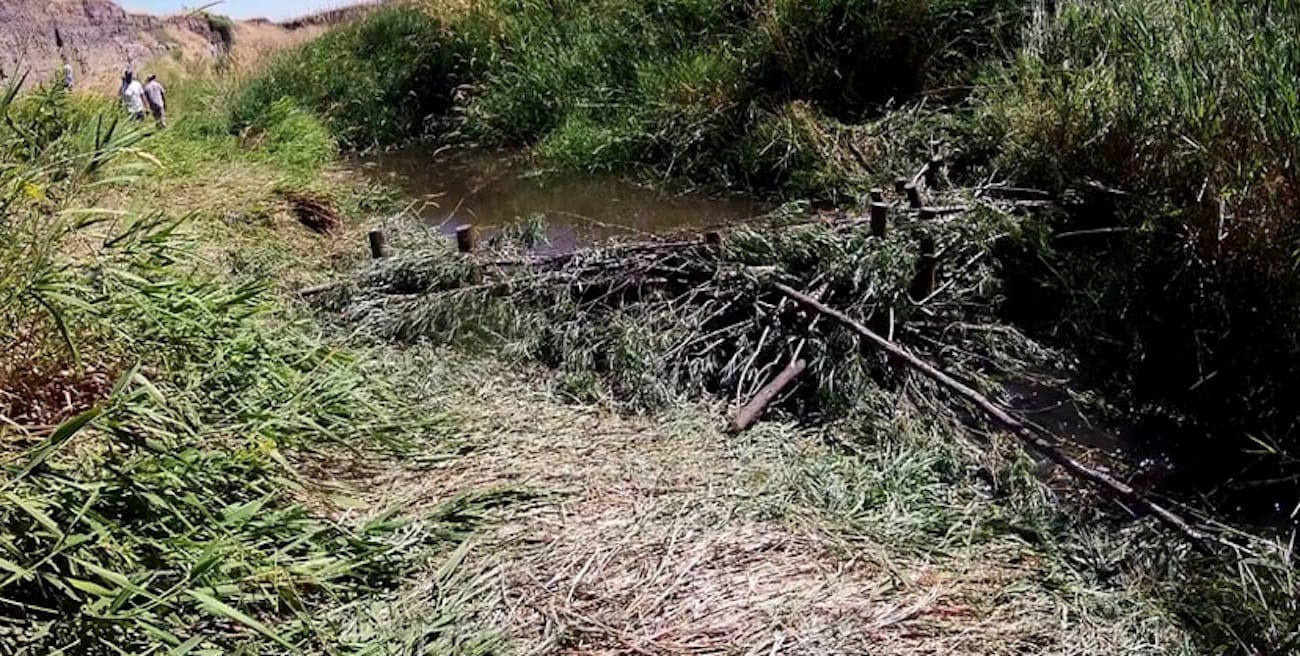An Artificial Beaver Dam to Restore an Eroded Stream Bed

Pataha Creek Beaver Dam Analog Timelapse from Snake River Salmon Recovery on Vimeo.
You are looking at a downcut stream bed. Note the vertical bank at upper left: this means active downcutting continues. Due to erosion, the water flows at least 10-feet lower than the old meadow floodplain above. This little artificial beaver dam slows and backs up water. This causes sediment to settle out, raising the stream bottom as sediment is deposited and erosion is reversed.
If the beavers built their dams only from the grasses and cane available in this photo, the dams could wash out with every flood. So humans have created a network of deeply sunk vertical posts and placed limbs and cane within. Once the dam has a vertical framework that withstands flood surges, the pond is established and beavers can be reintroduced. Experience has shown they will readily build on these dams and will raise them as needed if humans periodically reinforce the vertical structure.
Even without beavers, as the stream bottom builds back up new dams might be added on top of the new sediment. Either way, the dried out meadows are again sub-irrigated, and, become floodplains across the valley.
Structures like this should work in desert gullies where it is not possible to create a permanent pond. Placing several of these a few hundred feet apart creates speed bumps that slow and retain water, raising the gully and returning water to the old floodplains alongside. Water again grows grass instead of cutting gaping wounds into the grasslands.
